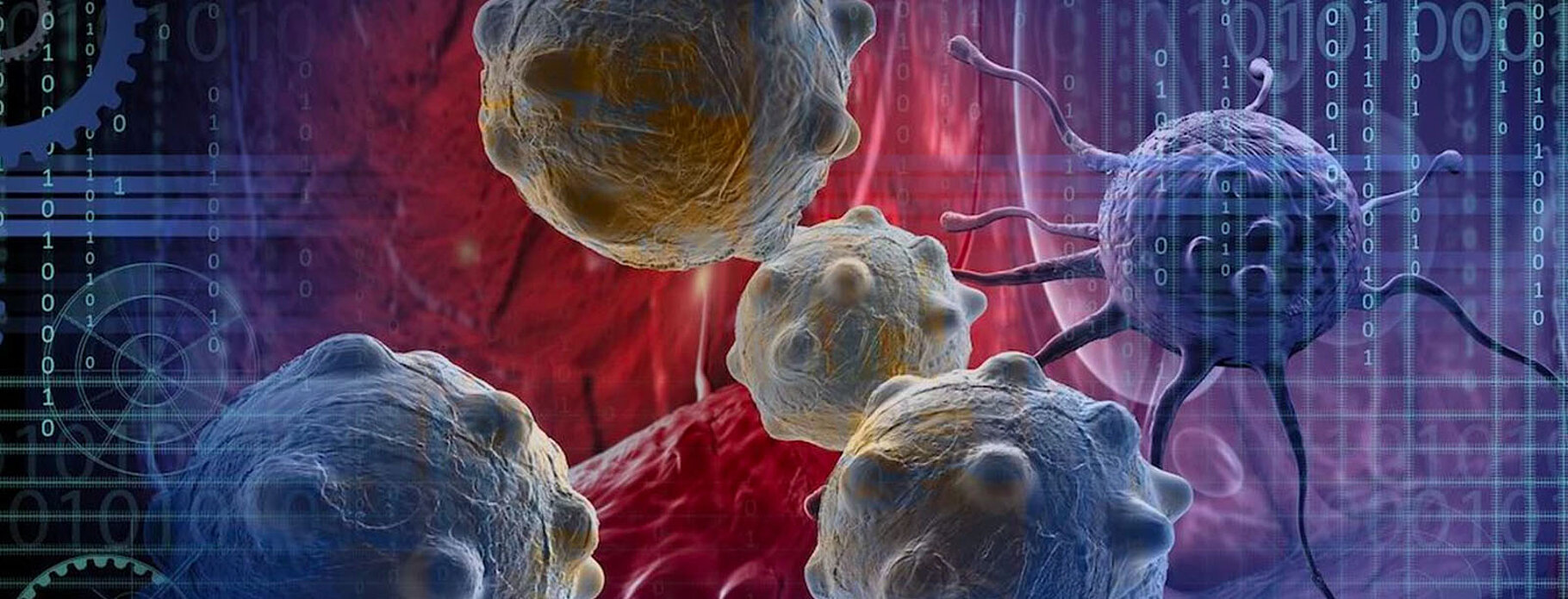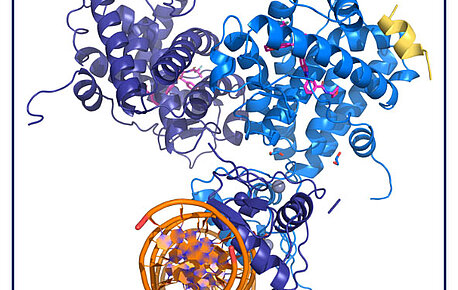
Chromatin and epigenetic regulation
Chromatin and epigenetic regulation
The main research activity of our group is to study the role of histone variants and their deposition machineries in the epigenetic control of human genome activity at the genome- wide level. Among the various epigenetic memory mechanisms, the local replacement of canonical histones within the nucleosome by variant histones has the potential to affect considerably the activity of the corresponding genomic regions. Indeed, nucleosomes bearing histone variants have distinct structures and functional activities in vitro and some histone variants are incorporated at specific genomic locations. Our laboratory is focusing on the role of histone variants in gene regulation and genome integrity. We have recently implicated macroH2A in PARP-1 enzymatic activity and transcription regulation (Ouararhni et al., 2006), and discovered a new link between histone variants, transcription factors and non- coding RNA (unpublished results). This association with transcription factors and non-coding RNA is novel and will certainly help us to understand how chromatin domains are established and how epigenetic information is stored and transmitted to daughter cells. Alteration of these epigenetic marks is associated with developmental disorders and cancer.
Members
Researchers
Post-doctoral fellows
PhD students
Engineers
Technicians
News

The quaternary structure of the GR highlights inter-domain allosteric communication
In inflammatory or autoimmune diseases, modulating the action of the glucocorticoid receptor (GR) is an effective therapeutic strategy. However, the…
Read more
Events
On
12/182025
Publications
2024
Article in a journal
Identification of a novel DNA oxidative damage repair pathway, requiring the ubiquitination of the histone variant macroH2A1.1
- Khalid Ouararhni
- Flore Mietton
- Jamal Sabir
- Abdulkhaleg Ibrahim
- Annie Molla
- Raed Albheyri
- Ali Zari
- Ahmed Bahieldin
- Hervé Menoni
- Christian Bronner
- Stefan Dimitrov
- Ali Hamiche
BMC Biology ; Volume: 22 ; Page: 188
Article in a journal
UHRF1 poly-auto-ubiquitination induced by the anti-cancer drug, thymoquinone, is involved in the DNA repair machinery recruitment.
- Naif A.R. Almalki
- Jamal S.M. Sabir
- Abdulkhaleg Ibrahim
- Mahmoud Alhosin
- Amer Asseri
- Raed Albiheyri
- Ali Zari
- Ahmed Bahieldin
- Aqib Javed
- Yves Mély
- Ali Hamiche
- Marc Mousli
- Christian Bronner
International Journal of Biochemistry and Cell Biology ; Volume: 171 ; Page: 106582
Article in a journal
H2A.Z is involved in premature aging and DSB repair initiation in muscle fibers
- Edwige Belotti
- Nicolas Lacoste
- Arslan Iftikhar
- Thomas Simonet
- Christophe Papin
- Alexis Osseni
- Nathalie Streichenberger
- Pierre-Olivier Mari
- Emmanuelle Girard
- Mohamed Graies
- Giuseppina Giglia-Mari
- Stefan Dimitrov
- Ali Hamiche
- Laurent Schaeffer
Nucleic Acids Research ; Volume: 52 ; Page: 3031-3049
Article in a journal
Identification and Characterization of HIRIP3 as a Histone H2A Chaperone
- Maria Ignatyeva
- Abdul Kareem Mohideen Patel
- Abdulkhaleg Ibrahim
- Raed Albiheyri
- Ali Zari
- Ahmed Bahieldin
- Christian Bronner
- Jamal Sabir
- Ali Hamiche
Cells ; Volume: 13 ; Page: 273
Article in a journal
Development of a mouse embryonic stem cell model for investigating the functions of the linker histone H1 ‐4
- Abed Alkarem Abu Alhaija
- Imtiaz Nisar Lone
- Esin Ozkuru Sekeroglu
- Tugce Batur
- Dimitar Angelov
- Stefan Dimitrov
- Ali Hamiche
- Elif Nur Firat Karalar
- Muhammed Erdem Ercan
- Tamer Yagci
- Hani Alotaibi
- Muhammed Kasim Diril
FEBS Open Bio
2023
Article in a journal
MBD4 loss results in global reactivation of promoters and retroelements with low methylated CpG density
- Christophe Papin
- Abdulkhaleg Ibrahim
- Jamal Sabir
- Stéphanie Le Gras
- Isabelle Stoll
- Raed Albiheyri
- Ali Zari
- Ahmed Bahieldin
- Alfonso Bellacosa
- Christian Bronner
- Ali Hamiche
Journal of experimental & clinical cancer research ; Volume: 42 ; Page: 301
Article in a journal
The CENP-A nucleosome: where and when it happens during the inner kinetochore’s assembly
- Seyit Kale
- Ramachandran Boopathi
- Edwige Belotti
- Imtiaz Nisar Lone
- Mohamed Graies
- Maria Schröder
- Maria Petrova
- Christophe Papin
- Jan Bednar
- Iva Ugrinova
- Ali Hamiche
- Stefan Dimitrov
Trends in Biochemical Sciences ; Volume: 48 ; Page: 849-859
Article in a journal
Asymmetric dimerization in a transcription factor superfamily is promoted by allosteric interactions with DNA
- Abdul Kareem Mohideen Patel
- Pierre Vilela
- Tajith Baba Shaik
- Alastair G Mcewen
- Isabelle Hazemann
- Karl Brillet
- Eric Ennifar
- Ali Hamiche
- Gabriel V Markov
- Vincent Laudet
- Dino Moras
- Bruno P Klaholz
- Isabelle M Billas
Nucleic Acids Research ; Volume: 51 ; Page: 8864-8879
Article in a journal » Review article
Natural and Synthetic Anticancer Epidrugs Targeting the Epigenetic Integrator UHRF1
- Waseem Ashraf
- Tanveer Ahmad
- Nicolas Reynoird
- Ali Hamiche
- Yves Mély
- Christian Bronner
- Marc Mousli
Molecules ; Volume: 28 ; Page: 5997
Article in a journal
Molecular Mechanism of Nucleosome Recognition by the Pioneer Transcription Factor Sox
- Burcu Ozden
- Ramachandran Boopathi
- Ayşe Berçin Barlas
- Imtiaz Lone
- Jan Bednar
- Carlo Petosa
- Seyit Kale
- Ali Hamiche
- Dimitar Angelov
- Stefan Dimitrov
- Ezgi Karaca
Journal of Chemical Information and Modeling ; Volume: 63 ; Page: 3839-3853
